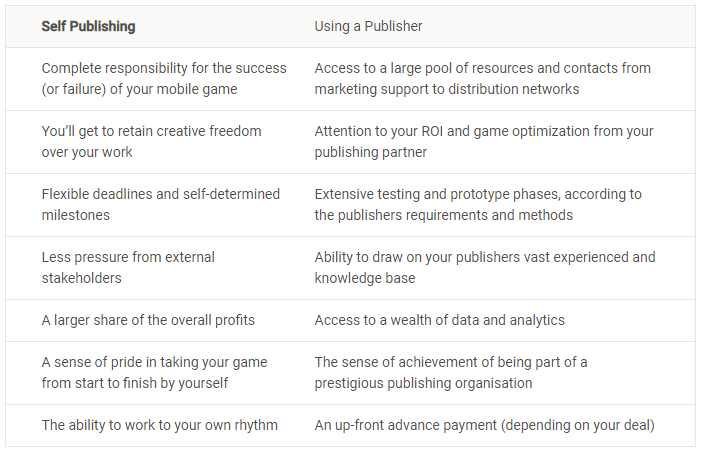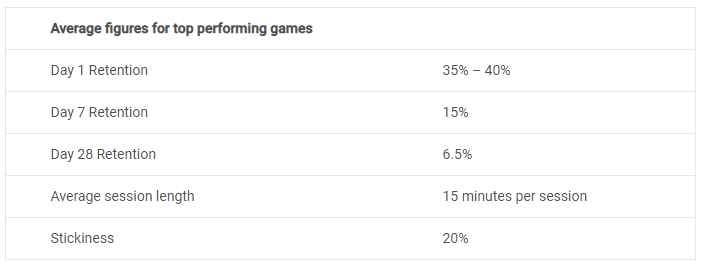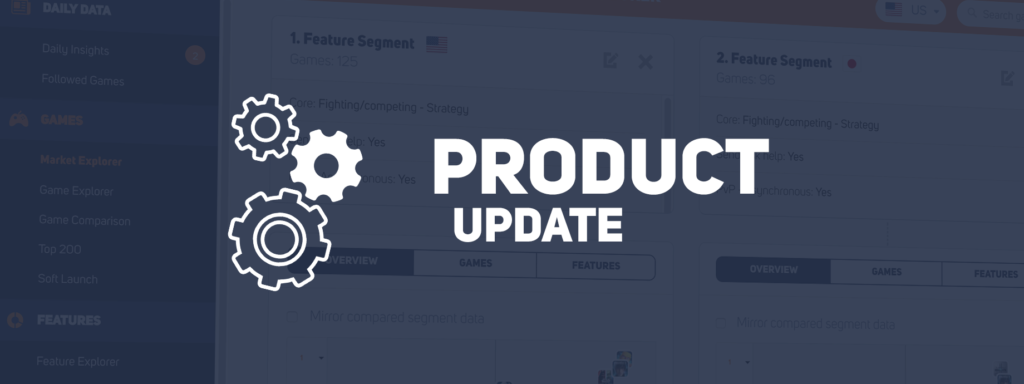Publishing your mobile game? From DIY to partnerships, here’s a look at the two sides of the mobile game publishing coin.
Editor’s note: This post was originally published by Sarah Impey, Content Marketing Manager at GameAnalytics. With several years of experience digging into industry trends, Sarah knows how to boil down complicated topics into key insights.
If you’ve stumbled across this post, then you’re most likely considering publishing your mobile game (congrats!). However, before you dive in and start making money, you’ll need to make an important choice. Self publish, or find a publishing partner?
In the past, finding a publisher was almost standard practice due to their expertise in areas like UA & marketing. But now, it has never been easier to self publish, with developers having access to the steam and app stores but also a bunch of online resources and guidelines.
However, with this ease comes competition, and as you may be aware, the market has never been more competitive (this is where those nifty Publishers come in handy).
So, how do you know what the best option is for your title? To give you a helping hand with this all-important decision, we’ve dissected the benefits of each route, and covered the essential steps you need to take to get the ball rolling.
There’s a ton of useful stuff in this post so feel free to skip to a specific section, if you like:
- Benefits of self publishing against using a publisher
- Health checking your game
- Steps for self publishing
- Steps for finding a publisher
- Useful resources
So, what are the benefits?

A certain amount of satisfaction and adventure can come with publishing your own title. Essentially, you can do whatever you want with your mobile game, and the success or failure is all yours. And that’s exhilarating. But depending on your goals, this might not be the best route for your title.


Working with a publisher also comes with its perks. From support, advice, funding and prestige, it still provides a common route to success for many indie developers. Hopefully the above list can give you some guidance on what you can expect from both routes.
Now, before you even consider publishing your game, you’re going to need to make sure your game is healthy (which leads on to our next section quite nicely).
Before you get started, health check your game!
The first thing you need to do before you even consider publishing is making sure your game is in good shape and well polished enough to engage, retain, and monetize your players.
Usually, most data-driven publishing houses will look at specific metrics (before they even consider taking your game on board). And equally, these metrics are key indicators that will help you understand the potential of your game – if you do decide on self publishing.
1. Beta test (and soft-launch) your game
Beta testing and soft-launching your title is a brilliant way to find out if your game is worth its merit. When done right, you’ll not only be able to eliminate any bugs in your title, but also build a solid report on all of your key metrics (these will be the ones that publishers usually care about).
You can recruit testers from your community of pre-launch fans if you have one, or announce that you need some help through social media. However you do it, try and gather together around 200 game tester for your beta, depending on the size and type of your project. (FYI – for larger projects, the more testers the better, as this will allow you to pick up on any hidden bugs lurking in the corners of your game.)


And as for soft-launching your title, you’ll want to consider things like choosing specific countries (with similar demographics) that you can measure and optimise before you push globally. GameAnalutics actually discussed the steps of this in a previous post of theirs, which you can browse through here.
Ideally, your testers will also be avid mobile gamers themselves. Or even better, indie developers who have experience in spotting issues with app development. But keep in mind that the opinions of fellow developers, friends and family is a good place to start – but not necessarily a true reflection of the quality of your title.
Here are some more useful resources on game and beta testing:
2. Improve your retention (it really is king)
Retention remains one of the biggest indicators of game potential. This basically lets you know how playable and interesting your title is, and how likely gamers are to play it. Publishers will always want to know your figures in this regard before they even consider offering you a deal.
GameAnalytics actually pulled together the most important stats about retention in their recent blog post on 5 Key Lessons To Boost Retention And Increase Engagement, but here’s a quick crash course:

If you want to dig a little deeper, GameAnalytics covered these stats and more in their 2018 Industry Benchmarks Report. However, make sure to use these stats as a guide, as it really does depend on the type of game you’re playing. Hyper-casual titles, for example, will see a much higher Day 1 Retention compared to most other genres, so please do your research.
3. Keep an eye on your monetization performance
This is probably one of the biggest things that both you and a publisher will care about: can your game actually make money?
Of course, you’ll need to define how your title will produce revenue first. Do you have a F2P (free to play) title that relies on IAP (in-app purchases)? Or is your game primarily ad-based? You’ll need to figure this out, so make sure to look at what similar games are doing if you’re not sure.


There’s a bunch of monetization strategies out there that you can read, but to save you some time, here’s a select few that you can gander through:
- Native Ads In Mobile Games – Everything You Need to Know
- Best Practices For In-Game Purchases: Converting Players To Spenders
- Ad Monetization For Hyper Casual Mobile Games – A Data Scientist’s Playbook
- How Space Ape Games Saw 4x Growth with Smart Monetization
By following these 3 steps, you’ll be in a better place to determine whether or not your game is ready to launch or be pitched to a publisher. Having these stats and figures to hand will make it easier to show to a potential publisher that your game has what it takes, as well as prove to yourself that your title is ready for the next stage.
Steps for each route
By now, you should have a healthy game that you want to take to market (woo!). To paint a better picture on what is involved with moving your game from testing to published, here are the steps involved for both routes:
How to self publish…
1. Research the market
Ideally, you would have done this at the beginning of your game’s development, but it’s important to remind yourself who you’re building your game for. All the modifications and tweaks in the world are redundant if you don’t have an informed idea about who will enjoy your game when it’s finally out there.
2. Test your game
As mentioned previously, beta testing and soft-launching allows you to discover issues with your game and spot any troublesome bugs. As well as this, make sure to test how your app performs on your OS of choice. You can test it on both iPhone and iPad depending on where you choose to publish, and also run it on different versions of Android. Are there any issues? If so, fix them.
3. Get your game ready for the app store
From brushing up on submission guidelines to optimizing your game’s appearance and description on the actual app store, this is also a vital step. Consider things like graphics, trailers and language support if you’re targeting multiple regions. Even something as simple as A/B testing your app store creatives can have a great effect on your conversion rates and CPI.
4. Build your social network and build the hype
You can start this step earlier if you like. But by this stage, you should be gearing up significantly when it comes to building the hype for your game. Consider ways to build a community for your title and how to get the word out to new potential gamers on your social media accounts.
5. Optimise your game based on feedback
Again, this step can be carried out at different points in your game’s cycle. Just make sure you factor in sufficient optimization phases where you integrate feedback about your game. The goal is to make your game the best it can be.
6. Monitor feedback once published
This might vary depending on the app store you choose to publish on. But no matter where it is, keep a close eye on it’s performance even after you’ve started to acquire new gamers. Look at things like player feedback and keep monitoring how your game performs. Constant updates and tweaks is the best way to keep your game healthy.
…and how to find a publisher
1. Define your objectives
Each publisher can bring different things to the table, so make sure to have a clear idea in your mind about what you are looking for. For instance, do you need support managing the publicity and marketing of your game? Or are you looking for publishers with in-house design teams that can help you with your UI?
2. Target your publishers
Once you have an idea about what you need, start researching the best publishers to suit your title. There is steep competition out there, so learning their expectations and guidelines can really help you here. Here’s a few examples of some guidelines from different publishers:
- Voodoo About Us -> Some nice information about what publishers can help you with.
- Voodoo GameAnalytics Case Study -> There’s some useful words in here about how Voodoo uses GameAnalytics to find new promising titles to take on.
- Round Zero Application form -> A nice checklist of what you need.
- Homa Publishing -> Some more information on what you can expect to get from publishers.
- Amanotes -> These guys have a focus on the music-game genre, so you can definitely find some useful tips and advice from them.
3. Prepare your pitch
Each one of the above publishers will have a different set of strengths and a unique working style when it comes to dealing with developers. And some may provide more advantages for your type of game. Make sure you factor this into your pitch – this will help you find the best way to showcase your game and its key strengths.
And if you followed our quick steps (above in this post) then you should have some key metrics and stats to share with any potential partner. This should hopefully help you stand out from the crowd and give your game a head start.
4. Agree on the terms
If you successfully find a promising match with a potential publishing partner, you’ll still need to settle on all the details. This can sometimes be a lengthy and complicated process, so making sure you’re clear on what you want from the beginning will help get you across the finish line.
This stage is when both sides can air any concerns and essentially get everything off their chests. Don’t overlook this, as this is will help to avoid any confusion or conflict in the future. Some of the things you’ll cover are:
- Deadlines and milestones
- Revenue split and advance payments
- IP rights and future publishing arrangements
- Exit clauses and minimum expectation requirements
Your game, your choice
There is no right answer when it comes to choosing your publishing route. It completely depends on where you are, how much knowledge you have of the industry, people you know, and how much help you need.
If you take a step back and look at what your goals are, you may be able to make an informed decision about what’s right for you.
If you do decide to go at it alone, here’s a list of stores that will allow you to self-publish, and what they advise when doing so:
And if you decide to seek out a publisher, make sure you keep these 4 important questions in mind:
- What level of commitment is the publisher willing to make?
- Will this publisher be a good fit for my mobile game?
- Will they offer me the right support and experience I need?
- Is the contract reasonable and fair?
Feel like we’ve missed anything? Send GameAnalytics an email at insights@gameanalytics.com and they’ll make sure to add it in.






















